Multi-Layer Preprocessing and U-Net with Residual Attention Block for Retinal Blood Vessel Segmentation
Abstract
:1. Introduction
- Introduces a novel framework that pioneers a multi-layer preprocessing approach, consisting of three stages: noise reduction, dynamic data imputation, and data augmentation. This comprehensive preprocessing strategy provides a holistic solution to the complexities associated with retinal image data, enhancing the quality of input for subsequent segmentation.
- The framework significantly boosts segmentation performance, resulting in impressive accuracy and precision in the segmentation of retinal blood vessels. The utilization of the U-Net with a multi-residual attention block (MRA-UNet) for this purpose underscores the framework’s effectiveness in this critical task.
- Demonstrates the framework’s versatility by effectively addressing challenges such as noisy images, limited datasets, and missing data. The proposed methods in noise reduction, data imputation, and data augmentation collectively contribute to the framework’s adaptability to various real-world scenarios.
- The framework exhibits remarkable efficiency in noise removal, as evidenced by the values of PSNR and SSIM for different noise levels. The application of the CNN with matrix factorization (MF) and D-U-NET methods for noise reduction reinforces its capability in enhancing image quality.
- The LDM plays a vital role in augmenting the training dataset, contributing to the model’s success.
2. Related Work
3. Methodology
| Algorithm 1: Data Augmentation and Segmentation | |
| 1 | Input ← Retinal Image Dataset |
| 2 | Initialize Preprocessing Stage |
| 3 | Step 1: Noise Removal |
| 4 | Apply a U-shaped CNN with Matrix Factorization |
| 5 | Reduce Image Noise |
| 6 | Apply D-U-Net to reduce image noise |
| 7 | Choose best Free_Noise_Image using PSNR and SSIM |
| 8 | Step 2: Dynamic Data Imputation |
| 9 | Apply Multiple Imputation Models |
| 10 | Fill Missing Data in Retinal_Image |
| 11 | Generate Imputed Retinal_Image |
| 12 | Step 3: Data Augmentation |
| 13 | Apply LDM to augment training dataset |
| 14 | FOR EACH Retinal_Image DO |
| 15 | Generate Multiple Augmented Images using LDM |
| 16 | END FOR |
| 17 | Initialize Segmentation Stage |
| 18 | Apply U-Net with a multi-residual attention block (MRA-UNet) |
| 19 | Segment Preprocessed & Free_Noise_Image |
| 20 | INSERT Preprocessed & Free_Noise_Image INTO U-Net |
| 21 | Output → Segmented Retinal Image |
3.1. DRIVE Dataset
3.2. Removing Noise
3.2.1. Removing Noise Using U-Shaped CNN with Matrix Factorization
3.2.2. Removing Noise Using D-U-NET
3.3. Dynamic Data Imputation
3.4. Data Augmentation Using LDM
3.5. Residual Attention U-Net Segmentation
3.6. Hardware and Software Specification
3.7. Metrics Evaluation
4. Results and Discussion
4.1. Results of Removing Noise Layer
4.2. Results of Data Imputation Layer
4.3. Results of Data Augmentation Layer
4.4. Results of Segmentation Stage
5. Statistical Analysis
5.1. Performance Metrics for Segmentation
- Dice score: the framework achieved an impressive Dice score of 95.32. This metric is a widely used measure in image segmentation, indicating the extent of overlap between the predicted and ground-truth segmentations. A score close to 100 signifies high accuracy in segmenting retinal blood vessels.
- Accuracy: the reported accuracy of 93.56 is another essential metric that measures the proportion of correctly segmented pixels. High accuracy indicates the model’s ability to correctly classify pixels as either blood vessels or background.
- Precision: the precision of 95.68 highlights the framework’s capability to minimize false positives. It signifies the accuracy of positive predictions, reducing the chances of misclassifying non-blood vessel pixels as blood vessels.
- Recall: a recall of 95.45 underscores the model’s effectiveness in identifying true positive cases, minimizing false negatives. It ensures that a significant portion of actual blood vessels is successfully detected.
5.2. Noise Reduction Effectiveness
5.3. Data Augmentation Impact
5.4. Versatility and Adaptability
6. Conclusions and Future Work
Author Contributions
Funding
Institutional Review Board Statement
Informed Consent Statement
Data Availability Statement
Acknowledgments
Conflicts of Interest
References
- Oubaalla, A.; El Moubtahij, H.; El Akkad, N. Medical Image Segmentation Using Deep Learning: A Survey. In Digital Technologies and Applications; Springer Nature: Cham, Switzerland, 2023; pp. 974–983. [Google Scholar]
- Aljabri, M.; AlGhamdi, M. A review on the use of deep learning for medical images segmentation. Neurocomputing 2022, 506, 311–335. [Google Scholar] [CrossRef]
- Boudegga, H.; Elloumi, Y.; Akil, M.; Hedi Bedoui, M.; Kachouri, R.; Abdallah, A.B. Fast and efficient retinal blood vessel segmentation method based on deep learning network. Comput. Med. Imaging Graph. 2021, 90, 101902. [Google Scholar] [CrossRef] [PubMed]
- Ranjbarzadeh, R.; Bagherian Kasgari, A.; Jafarzadeh Ghoushchi, S.; Anari, S.; Naseri, M.; Bendechache, M. Brain tumor segmentation based on deep learning and an attention mechanism using MRI multi-modalities brain images. Sci. Rep. 2021, 11, 10930. [Google Scholar] [CrossRef] [PubMed]
- Wang, R.; Lei, T.; Cui, R.; Zhang, B.; Meng, H.; Nandi, A.K. Medical image segmentation using deep learning: A survey. IET Image Process. 2022, 16, 1243–1267. [Google Scholar] [CrossRef]
- Kumar, K.S.; Singh, N.P. Analysis of retinal blood vessel segmentation techniques: A systematic survey. Multimed. Tools Appl. 2023, 82, 7679–7733. [Google Scholar] [CrossRef]
- Ilesanmi, A.E.; Ilesanmi, T.; Gbotoso, G.A. A systematic review of retinal fundus image segmentation and classification methods using convolutional neural networks. Healthc. Anal. 2023, 4, 100261. [Google Scholar] [CrossRef]
- Ji, Y.; Ji, Y.; Liu, Y.; Zhao, Y.; Zhang, L. Research progress on diagnosing retinal vascular diseases based on artificial intelligence and fundus images. Front. Cell Dev. Biol. 2023, 11, 1168327. [Google Scholar] [CrossRef]
- Arnould, L.; Meriaudeau, F.; Guenancia, C.; Germanese, C.; Delcourt, C.; Kawasaki, R.; Cheung, C.Y.; Creuzot-Garcher, C.; Grzybowski, A. Using Artificial Intelligence to Analyse the Retinal Vascular Network: The Future of Cardiovascular Risk Assessment Based on Oculomics? A Narrative Review. Ophthalmol. Ther. 2023, 12, 657–674. [Google Scholar] [CrossRef]
- Zhao, X.; Lin, Z.; Yu, S.; Xiao, J.; Xie, L.; Xu, Y.; Tsui, C.-K.; Cui, K.; Zhao, L.; Zhang, G.; et al. An artificial intelligence system for the whole process from diagnosis to treatment suggestion of ischemic retinal diseases. Cell Rep. Med. 2023, 4, 101197. [Google Scholar] [CrossRef]
- Babenko, B.; Mitani, A.; Traynis, I.; Kitade, N.; Singh, P.; Maa, A.Y.; Cuadros, J.; Corrado, G.S.; Peng, L.; Webster, D.R.; et al. Detection of signs of disease in external photographs of the eyes via deep learning. Nat. Biomed. Eng. 2022, 6, 1370–1383. [Google Scholar] [CrossRef]
- Yadav, R.; Pandey, M. Image Segmentation Techniques: A Survey. In Proceedings of Data Analytics and Management; Springer Nature: Singapore, 2022; pp. 231–239. [Google Scholar]
- Sood, D.; Singla, A. A Survey of Segmentation Techniques for Medical Images. In Proceedings of the 2022 10th International Conference on Reliability, Infocom Technologies and Optimization (Trends and Future Directions) (ICRITO), Noida, India, 13–14 October 2022; pp. 1–8. [Google Scholar]
- Nayak, J.; Acharya, U.R.; Bhat, P.S.; Shetty, N.; Lim, T.-C. Automated Diagnosis of Glaucoma Using Digital Fundus Images. J. Med. Syst. 2008, 33, 337. [Google Scholar] [CrossRef] [PubMed]
- Gulshan, V.; Peng, L.; Coram, M.; Stumpe, M.C.; Wu, D.; Narayanaswamy, A.; Venugopalan, S.; Widner, K.; Madams, T.; Cuadros, J.; et al. Development and Validation of a Deep Learning Algorithm for Detection of Diabetic Retinopathy in Retinal Fundus Photographs. JAMA 2016, 316, 2402–2410. [Google Scholar] [CrossRef] [PubMed]
- Galdran, A.; Anjos, A.; Dolz, J.; Chakor, H.; Lombaert, H.; Ayed, I.B. State-of-the-art retinal vessel segmentation with minimalistic models. Sci. Rep. 2022, 12, 6174. [Google Scholar] [CrossRef] [PubMed]
- Siddique, N.; Paheding, S.; Elkin, C.P.; Devabhaktuni, V. U-Net and Its Variants for Medical Image Segmentation: A Review of Theory and Applications. IEEE Access 2021, 9, 82031–82057. [Google Scholar] [CrossRef]
- Huang, K.-W.; Yang, Y.-R.; Huang, Z.-H.; Liu, Y.-Y.; Lee, S.-H. Retinal Vascular Image Segmentation Using Improved UNet Based on Residual Module. Bioengineering 2023, 10, 722. [Google Scholar] [CrossRef]
- Maharana, K.; Mondal, S.; Nemade, B. A review: Data pre-processing and data augmentation techniques. Glob. Transit. Proc. 2022, 3, 91–99. [Google Scholar] [CrossRef]
- Izadi, S.; Sutton, D.; Hamarneh, G. Image denoising in the deep learning era. Artif. Intell. Rev. 2023, 56, 5929–5974. [Google Scholar] [CrossRef]
- Salvi, M.; Acharya, U.R.; Molinari, F.; Meiburger, K.M. The impact of pre- and post-image processing techniques on deep learning frameworks: A comprehensive review for digital pathology image analysis. Comput. Biol. Med. 2021, 128, 104129. [Google Scholar] [CrossRef]
- Mohan, J.; Krishnaveni, V.; Guo, Y. A survey on the magnetic resonance image denoising methods. Biomed. Signal Process. Control 2014, 9, 56–69. [Google Scholar] [CrossRef]
- Zhang, L.; Liu, J.; Shang, F.; Li, G.; Zhao, J.; Zhang, Y. Robust segmentation method for noisy images based on an unsupervised denosing filter. Tsinghua Sci. Technol. 2021, 26, 736–748. [Google Scholar] [CrossRef]
- Tian, C.; Fei, L.; Zheng, W.; Xu, Y.; Zuo, W.; Lin, C.-W. Deep learning on image denoising: An overview. Neural Netw. 2020, 131, 251–275. [Google Scholar] [CrossRef] [PubMed]
- Xu, M.; Yoon, S.; Fuentes, A.; Park, D.S. A Comprehensive Survey of Image Augmentation Techniques for Deep Learning. Pattern Recognit. 2023, 137, 109347. [Google Scholar] [CrossRef]
- Kazerouni, A.; Aghdam, E.K.; Heidari, M.; Azad, R.; Fayyaz, M.; Hacihaliloglu, I.; Merhof, D. Diffusion models in medical imaging: A comprehensive survey. Med. Image Anal. 2023, 88, 102846. [Google Scholar] [CrossRef]
- Oussidi, A.; Elhassouny, A. Deep generative models: Survey. In Proceedings of the 2018 International Conference on Intelligent Systems and Computer Vision (ISCV), Fez, Morocco, 2–4 April 2018; pp. 1–8. [Google Scholar]
- Shorten, C.; Khoshgoftaar, T.M. A survey on Image Data Augmentation for Deep Learning. J. Big Data 2019, 6, 60. [Google Scholar] [CrossRef]
- Rombach, R.; Blattmann, A.; Lorenz, D.; Esser, P.; Ommer, B. High-Resolution Image Synthesis with Latent Diffusion Models. In Proceedings of the 2022 IEEE/CVF Conference on Computer Vision and Pattern Recognition (CVPR), New Orleans, LA, USA, 18–24 June 2022; pp. 10674–10685. [Google Scholar]
- Sun, Y.; Li, J.; Xu, Y.; Zhang, T.; Wang, X. Deep learning versus conventional methods for missing data imputation: A review and comparative study. Expert Syst. Appl. 2023, 227, 120201. [Google Scholar] [CrossRef]
- Soomro, T.A.; Afifi, A.J.; Zheng, L.; Soomro, S.; Gao, J.; Hellwich, O.; Paul, M. Deep Learning Models for Retinal Blood Vessels Segmentation: A Review. IEEE Access 2019, 7, 71696–71717. [Google Scholar] [CrossRef]
- Sule, O.O. A Survey of Deep Learning for Retinal Blood Vessel Segmentation Methods: Taxonomy, Trends, Challenges and Future Directions. IEEE Access 2022, 10, 38202–38236. [Google Scholar] [CrossRef]
- Cai, Y.; Yuan, J. A Review of U-Net Network Medical Image Segmentation Applications. In Proceedings of the 2022 5th International Conference on Artificial Intelligence and Pattern Recognition, Xiamen, China, 23–25 September 2022; pp. 457–461. [Google Scholar] [CrossRef]
- Ronneberger, O.; Fischer, P.; Brox, T. U-Net: Convolutional Networks for Biomedical Image Segmentation. In Medical Image Computing and Computer-Assisted Intervention—MICCAI 2015; Springer International Publishing: Cham, Switzerland, 2015; pp. 234–241. [Google Scholar]
- Punn, N.S.; Agarwal, S. Modality specific U-Net variants for biomedical image segmentation: A survey. Artif. Intell. Rev. 2022, 55, 5845–5889. [Google Scholar] [CrossRef]
- Yin, X.-X.; Sun, L.; Fu, Y.; Lu, R.; Zhang, Y. U-Net-Based Medical Image Segmentation. J. Healthc. Eng. 2022, 2022, 4189781. [Google Scholar] [CrossRef]
- Li, D.; Dharmawan, D.A.; Ng, B.P.; Rahardja, S. Residual U-Net for Retinal Vessel Segmentation. In Proceedings of the 2019 IEEE International Conference on Image Processing (ICIP), Taipei, Taiwan, 22–25 September 2019; pp. 1425–1429. [Google Scholar]
- Si, Z.; Fu, D.; Li, J. U-Net with Attention Mechanism for Retinal Vessel Segmentation. In Mage and Graphics; Springer International Publishing: Cham, Switzerland, 2019; pp. 668–677. [Google Scholar]
- Gargari, M.S.; Seyedi, M.H.; Alilou, M. Segmentation of Retinal Blood Vessels Using U-Net++ Architecture and Disease Prediction. Electronics 2022, 11, 3516. [Google Scholar] [CrossRef]
- Li, Z.; Zhang, H.; Li, Z.; Ren, Z. Residual-Attention UNet++: A Nested Residual-Attention U-Net for Medical Image Segmentation. Appl. Sci. 2022, 12, 7149. [Google Scholar] [CrossRef]
- Huang, H.; Lin, L.; Tong, R.; Hu, H.; Zhang, Q.; Iwamoto, Y.; Han, X.; Chen, Y.-W.; Wu, J. UNet 3+: A Full-Scale Connected UNet for Medical Image Segmentation. arXiv 2004, arXiv:2004.08790. [Google Scholar]
- Xu, Y.; Hou, S.; Wang, X.; Li, D.; Lu, L. A Medical Image Segmentation Method Based on Improved UNet 3+ Network. Diagnostics 2023, 13, 576. [Google Scholar] [CrossRef] [PubMed]
- Guo, C.; Szemenyei, M.; Yi, Y.; Wang, W.; Chen, B.; Fan, C. SA-UNet: Spatial Attention U-Net for Retinal Vessel Segmentation. In Proceedings of the 2020 25th International Conference on Pattern Recognition (ICPR), Milan, Italy, 10–15 January 2021; pp. 1236–1242. [Google Scholar]
- Wang, B.; Qiu, S.; He, H. Dual Encoding U-Net for Retinal Vessel Segmentation. In Medical Image Computing and Computer Assisted Intervention—MICCAI 2019; Springer International Publishing: Cham, Switzerland, 2019; pp. 84–92. [Google Scholar]
- Wu, Y.; Xia, Y.; Song, Y.; Zhang, D.; Liu, D.; Zhang, C.; Cai, W. Vessel-Net: Retinal Vessel Segmentation Under Multi-path Supervision. In Medical Image Computing and Computer Assisted Intervention—MICCAI 2019; Springer International Publishing: Cham, Switzerland, 2019; pp. 264–272. [Google Scholar]
- Ni, Z.-L.; Bian, G.-B.; Zhou, X.-H.; Hou, Z.-G.; Xie, X.-L.; Wang, C.; Zhou, Y.-J.; Li, R.-Q.; Li, Z. RAUNet: Residual Attention U-Net for Semantic Segmentation of Cataract Surgical Instruments. In Neural Information Processing; Springer International Publishing: Cham, Switzerland, 2019; pp. 139–149. [Google Scholar]
- Zhao, S.; Liu, T.; Liu, B.; Ruan, K. Attention residual convolution neural network based on U-net (AttentionResU-Net) for retina vessel segmentation. IOP Conf. Ser. Earth Environ. Sci. 2020, 440, 32138. [Google Scholar] [CrossRef]
- Dong, F.; Wu, D.; Guo, C.; Zhang, S.; Yang, B.; Gong, X. CRAUNet: A cascaded residual attention U-Net for retinal vessel segmentation. Comput. Biol. Med. 2022, 147, 105651. [Google Scholar] [CrossRef]
- Guo, C.; Szemenyei, M.; Hu, Y.; Wang, W.; Zhou, W.; Yi, Y. Channel Attention Residual U-Net for Retinal Vessel Segmentation. In Proceedings of the ICASSP 2021–2021 IEEE International Conference on Acoustics, Speech and Signal Processing (ICASSP), Toronto, ON, Canada, 6–11 June 2021; pp. 1185–1189. [Google Scholar]
- Yang, Y.; Wan, W.; Huang, S.; Zhong, X.; Kong, X. RADCU-Net: Residual attention and dual-supervision cascaded U-Net for retinal blood vessel segmentation. Int. J. Mach. Learn. Cybern. 2023, 14, 1605–1620. [Google Scholar] [CrossRef]
- Staal, J.; Abramoff, M.D.; Niemeijer, M.; Viergever, M.A.; Ginneken, B.v. Ridge-based vessel segmentation in color images of the retina. IEEE Trans. Med. Imaging 2004, 23, 501–509. [Google Scholar] [CrossRef]
- li, Q. Denoising image by matrix factorization in U-shaped convolutional neural network. J. Vis. Commun. Image Represent. 2023, 90, 103729. [Google Scholar] [CrossRef]
- Karaoğlu, O.; Bilge, H.Ş.; Uluer, İ. Removal of speckle noises from ultrasound images using five different deep learning networks. Eng. Sci. Technol. Int. J. 2022, 29, 101030. [Google Scholar] [CrossRef]
- van Buuren, S.; Groothuis-Oudshoorn, K. mice: Multivariate Imputation by Chained Equations in R. J. Stat. Softw. 2011, 45, 1–67. [Google Scholar] [CrossRef]
- Popolizio, M.; Amato, A.; Politi, T.; Calienno, R.; Lecce, V.D. Missing data imputation in meteorological datasets with the GAIN method. In Proceedings of the 2021 IEEE International Workshop on Metrology for Industry 4.0 & IoT (MetroInd4.0&IoT), Rome, Italy, 7–9 June 2021; pp. 556–560. [Google Scholar]
- Gondara, L.; Wang, K. MIDA: Multiple Imputation Using Denoising Autoencoders. In Advances in Knowledge Discovery and Data Mining; Springer International Publishing: Cham, Switzerland, 2018; pp. 260–272. [Google Scholar]
- Nagarajan, G.; Dhinesh Babu, L.D. Missing data imputation on biomedical data using deeply learned clustering and L2 regularized regression based on symmetric uncertainty. Artif. Intell. Med. 2022, 123, 102214. [Google Scholar] [CrossRef] [PubMed]
- Awan, S.E.; Bennamoun, M.; Sohel, F.; Sanfilippo, F.; Dwivedi, G. A reinforcement learning-based approach for imputing missing data. Neural Comput. Appl. 2022, 34, 9701–9716. [Google Scholar] [CrossRef]
- Jafrasteh, B.; Hernández-Lobato, D.; Lubián-López, S.P.; Benavente-Fernández, I. Gaussian processes for missing value imputation. Knowl.-Based Syst. 2023, 273, 110603. [Google Scholar] [CrossRef]
- Lalande, F.; Doya, K. Numerical Data Imputation for Multimodal Data Sets: A Probabilistic Nearest-Neighbor Kernel Density Approach. arXiv 2023, arXiv:2306.16906. [Google Scholar]
- Neves, D.T.; Alves, J.; Naik, M.G.; Proença, A.J.; Prasser, F. From Missing Data Imputation to Data Generation. J. Comput. Sci. 2022, 61, 101640. [Google Scholar] [CrossRef]
- Han, J.; Kang, S. Dynamic imputation for improved training of neural network with missing values. Expert Syst. Appl. 2022, 194, 116508. [Google Scholar] [CrossRef]
- Li, J.; Wu, C.; Song, R.; Li, Y.; Xie, W. Residual Augmented Attentional U-Shaped Network for Spectral Reconstruction from RGB Images. Remote Sens. 2021, 13, 115. [Google Scholar] [CrossRef]
- Ansith, S.; Bini, A.A. A modified Generative Adversarial Network (GAN) architecture for land use classification. In Proceedings of the 2021 IEEE Madras Section Conference (MASCON), Chennai, India, 27–28 August 2021; pp. 1–6. [Google Scholar]
- Patil, A.; Venkatesh. DCGAN: Deep Convolutional GAN with Attention Module for Remote View Classification. In Proceedings of the 2021 International Conference on Forensics, Analytics, Big Data, Security (FABS), Bengaluru, India, 21–22 December 2021; pp. 1–10. [Google Scholar]
- Chen, Y.; Yang, X.-H.; Wei, Z.; Heidari, A.A.; Zheng, N.; Li, Z.; Chen, H.; Hu, H.; Zhou, Q.; Guan, Q. Generative Adversarial Networks in Medical Image augmentation: A review. Comput. Biol. Med. 2022, 144, 105382. [Google Scholar] [CrossRef]
- Arjovsky, M.; Chintala, S.; Bottou, L. Wasserstein Generative Adversarial Networks. In Proceedings of the 34th International Conference on Machine Learning, Proceedings of Machine Learning Research, Sydney, Australia, 6–11 August 2017; Available online: https://proceedings.mlr.press/v70/arjovsky17a.html (accessed on 14 September 2023).
- Mukherkjee, D.; Saha, P.; Kaplun, D.; Sinitca, A.; Sarkar, R. Brain tumor image generation using an aggregation of GAN models with style transfer. Sci. Rep. 2022, 12, 9141. [Google Scholar] [CrossRef]
- Qiu, D.; Cheng, Y.; Wang, X. Improved generative adversarial network for retinal image super-resolution. Comput. Methods Programs Biomed. 2022, 225, 106995. [Google Scholar] [CrossRef]
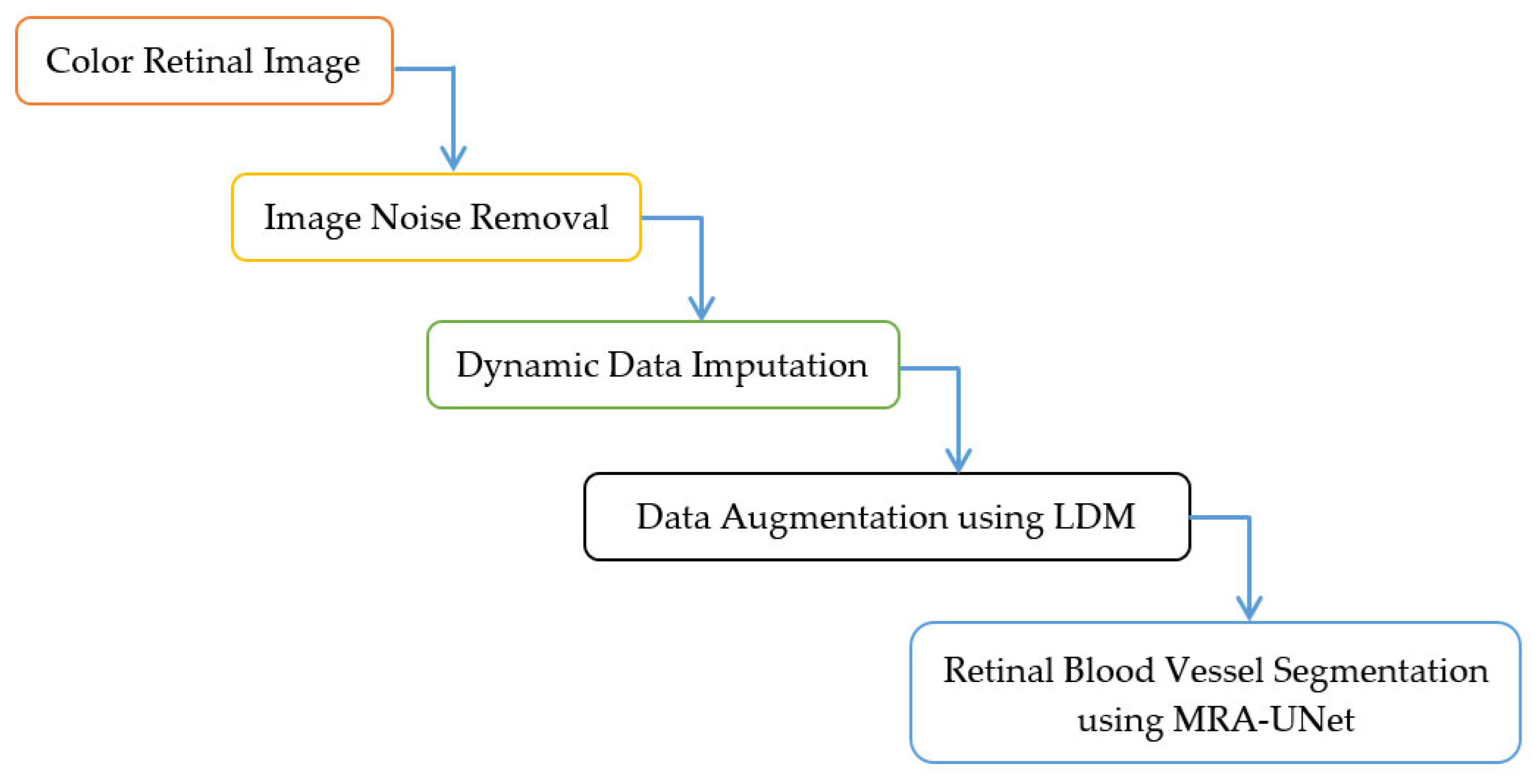
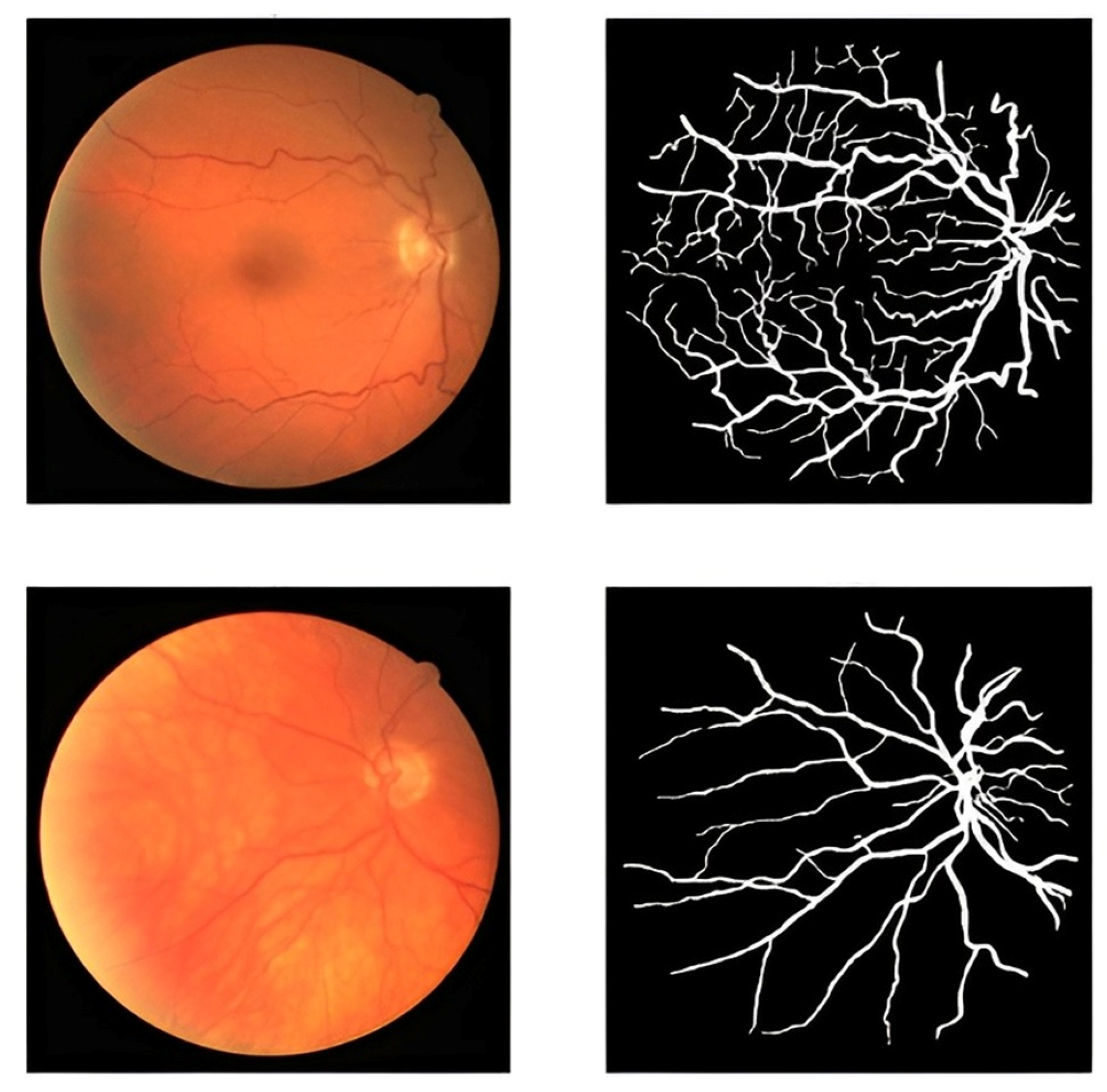
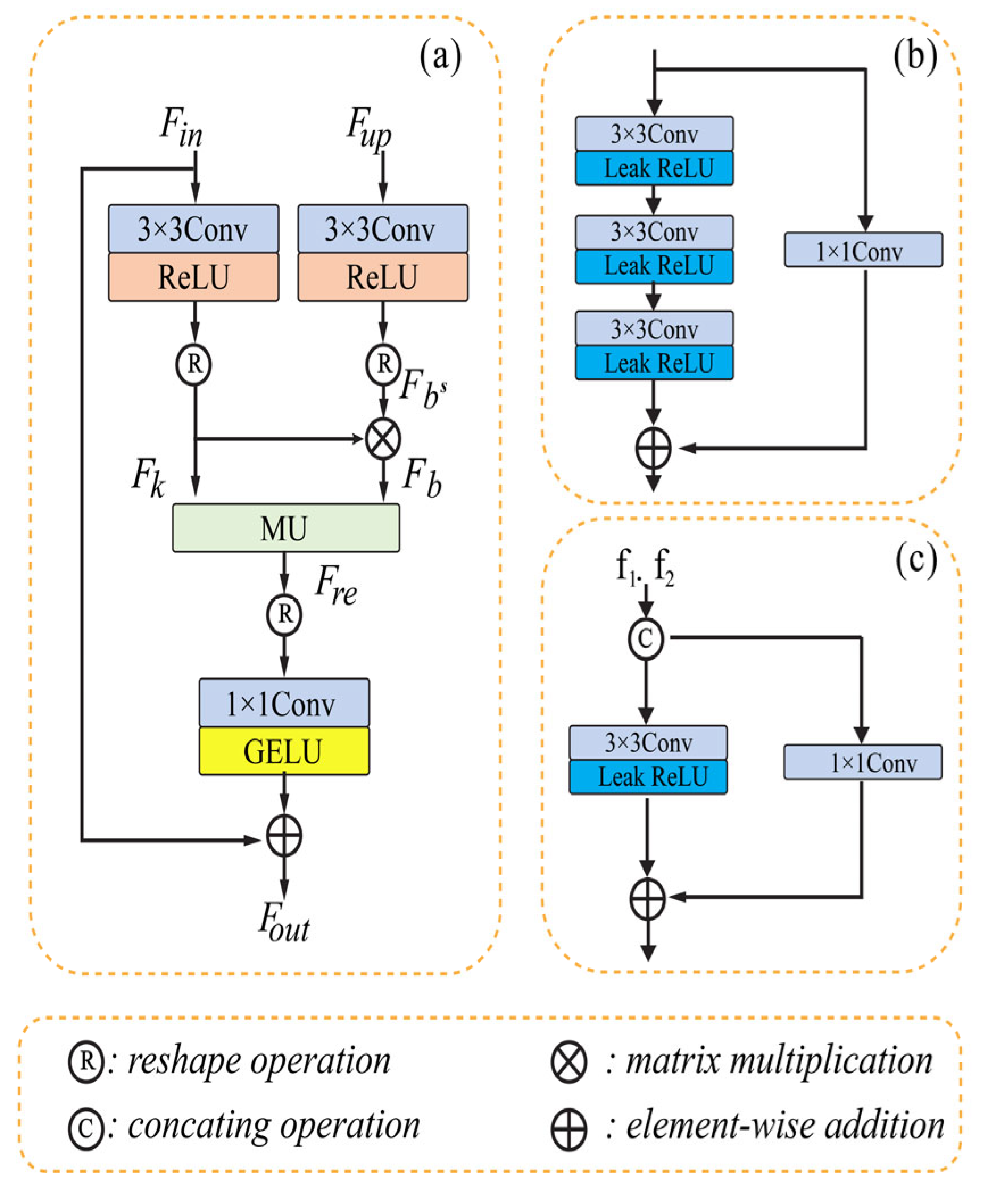


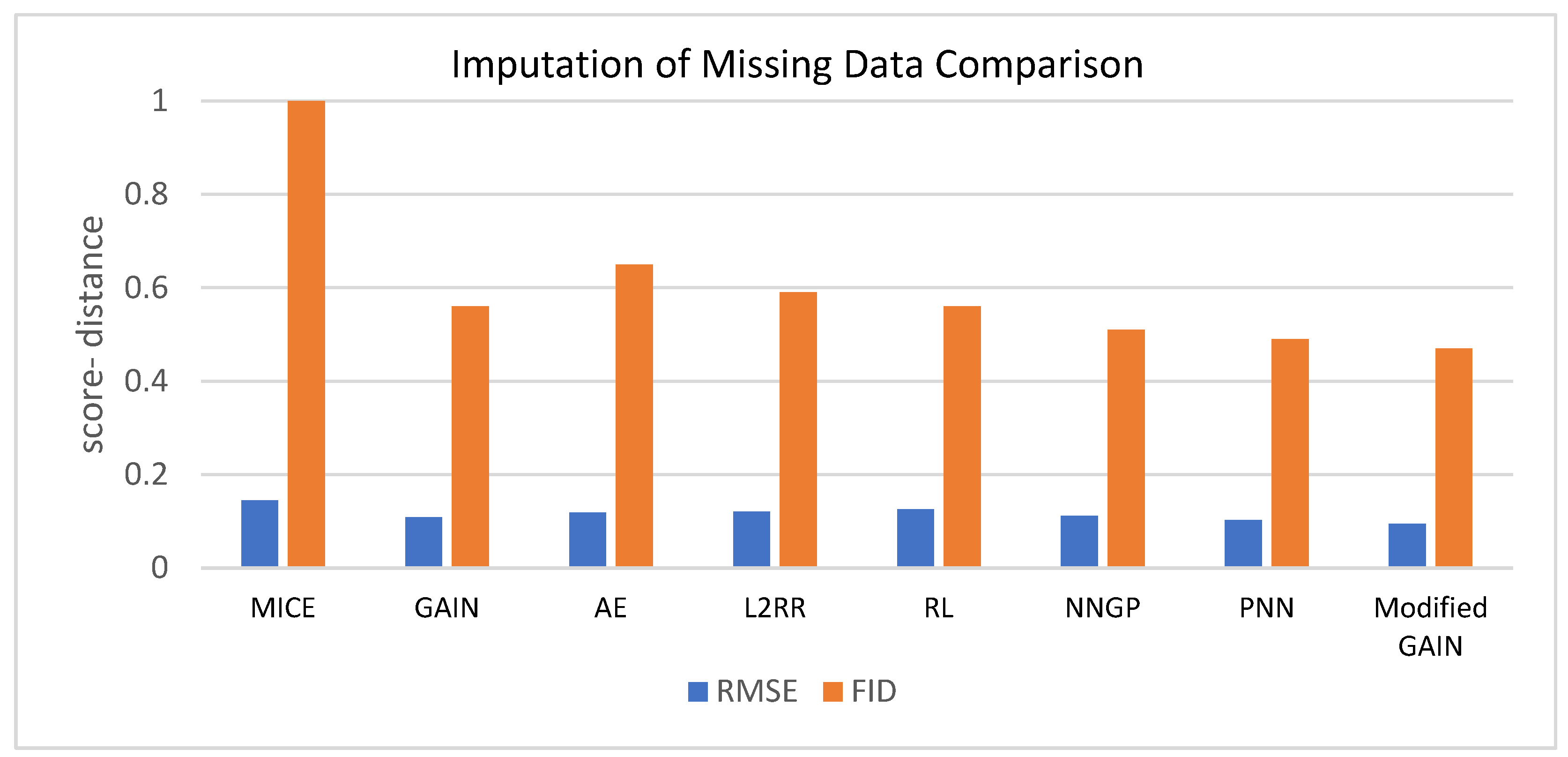
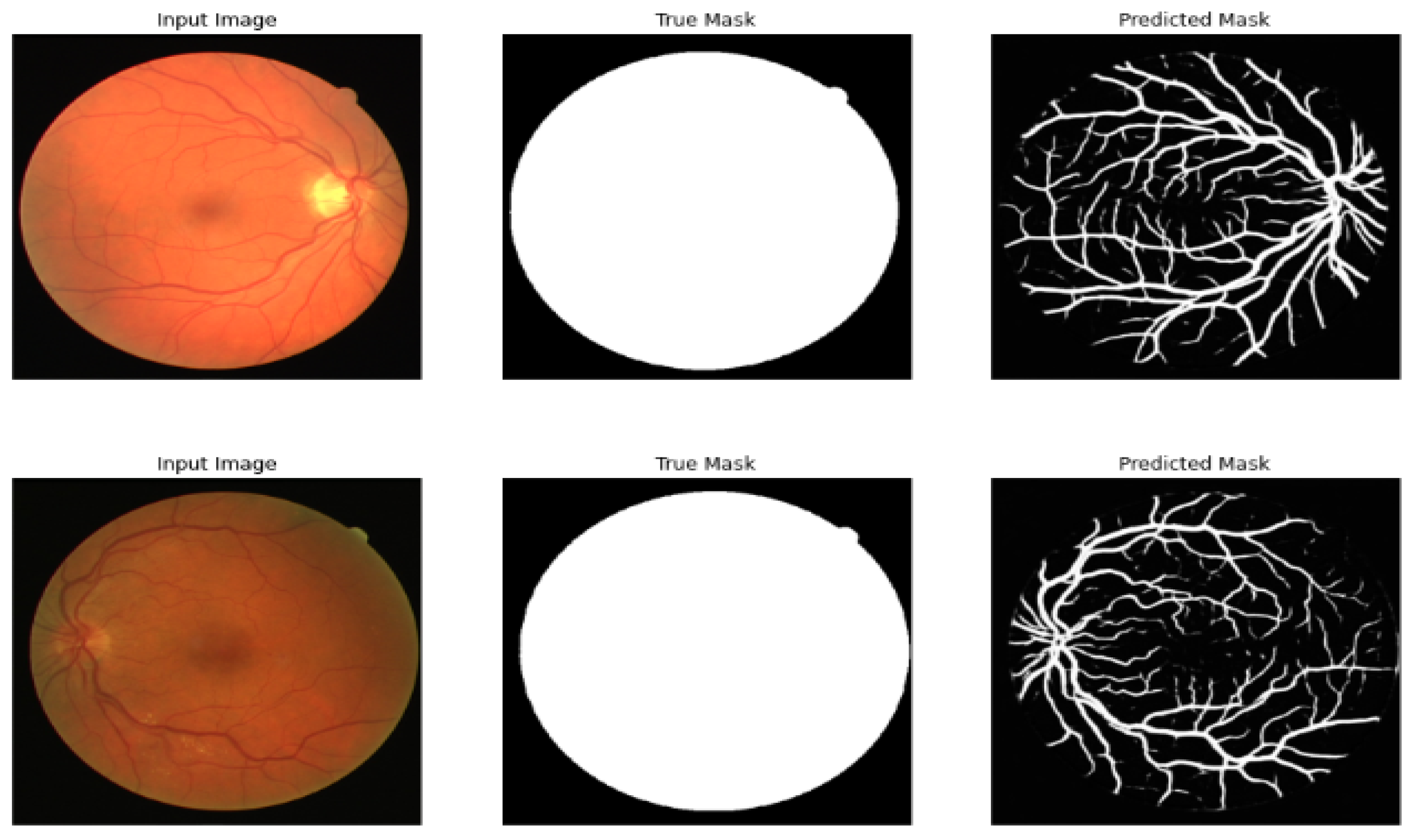
| Ref | DL Model | Task | Advantages | Disadvantages |
|---|---|---|---|---|
| [37] | Improved U-Net | Segmentation and detection | Accuracy |
|
| [39] | U-Net++ | Segmentation | Accuracy |
|
| [43] | SA-UNet | Segmentation | Network substitutes structured dropout convolutional blocks for the original U-Net. |
|
| [44] | DEU-Net | Segmentation | Accuracy |
|
| [45] | Vessel-Net | Segmentation | Accuracy and preprocessing step |
|
| Device | Description |
|---|---|
| Processors | Intel(R) Core(TM) i7-10750H CPU @ 2.60 GHz |
| Random Access Memory | 64.0 GB |
| Graphical Processing Unit | NVIDIA GeForce RTX 3050Ti |
| Space | 2 TB |
| Programming language | Python |
| Method | PSNR | SSIM | Time | ||||||
|---|---|---|---|---|---|---|---|---|---|
| 0.1 | 0.25 | 0.5 | 0.75 | 0.1 | 0.25 | 0.5 | 0.75 | ||
| Original Image | 15.31 | 14.31 | 11.34 | 8.34 | 67.31% | 60.30% | 50.02% | 39.01% | |
| CNN with attention | 31.89 | 28.45 | 26.89 | 24.19 | 88.49% | 81.26% | 78.12% | 73.15% | 24.98 |
| VAEs | 34.15 | 31.06 | 28.19 | 27.94 | 91.11% | 86.14% | 81.69% | 78.16% | 24.98 |
| GAN | 37.11 | 34.11 | 31.28 | 28.17 | 91.71% | 89.13% | 86.49% | 82.09% | 24.46 |
| Auto-encoder | 30.43 | 28.01 | 25.43 | 20.43 | 82.31% | 79.42% | 75.21% | 70.31% | 24.04 |
| D-U-NET | 39.23 | 37.14 | 33.21 | 30.42 | 94.41% | 91.09% | 88.01% | 83.21% | 23.13 |
| U-shaped CNN with MD | 40.09 | 38.11 | 33.10 | 29.97 | 94.63% | 92.00% | 89.23% | 84.65% | 24.03 |
| Model | RMSE | FID |
|---|---|---|
| MICE | 0.145 | 1 |
| GAIN | 0.109 | 0.56 |
| AE | 0.119 | 0.65 |
| L2RR | 0.121 | 0.59 |
| RL | 0.126 | 0.56 |
| NNGP | 0.112 | 0.51 |
| PNN | 0.103 | 0.49 |
| Modified GAIN | 0.0945 | 0.47 |
| Model | Minimum Batch Size | Epochs Number | Rate of Discriminator-Generator Learning | Rate of Generator Learning |
|---|---|---|---|---|
| MGAN | 128 | 200 | 0.0001–0.0002 | Adam |
| DCGAN | 128 | 200 | 0.0001–0.0002 | Adam |
| Vanilla GAN | 64 | 200 | 0.0001–0.0002 | Adam |
| Wasserstein GAN | 128 | 200 | 0.0001–0.0002 | Adam with gradient penalty |
| AGGrGAN | 64 | 200 | 0.0001–0.0002 | Adam |
| IGAN | 64 | 200 | 0.0001–0.0002 | Adam |
| Model | IS | FID |
|---|---|---|
| LDM | 13.6 | 43.7 |
| MGAN | 12.6 | 47.7 |
| DCGAN | 11.7 | 47.9 |
| Vanilla GAN | 10.23 | 49.2 |
| Wasserstein GAN | 12.45 | 45.32 |
| MG-CWGAN | 10.36 | 44.29 |
| AGGrGAN | 11.46 | 45.23 |
| IGAN | 11.78 | 45.69 |
| Model | Dice Score | Accuracy | Precision | Recall | Time per Epoch |
|---|---|---|---|---|---|
| Attention gate U-Net | 91.27 | 91.68 | 91.11 | 90.89 | 23.1 |
| U-Net | 87.36 | 88.01 | 88.69 | 88.46 | 24.6 |
| U-Net++ | 91.53 | 91.59 | 91.67 | 91.36 | 25.3 |
| RA-UNet++ | 92.01 | 92.58 | 92.83 | 92.77 | 24.6 |
| SA-UNet | 92.68 | 92.67 | 92.67 | 92.09 | 23.1 |
| DEU-Net | 91.93 | 91.55 | 92.35 | 92.23 | 23.6 |
| UNet 3+ | 92.12 | 91.78 | 92.68 | 92.11 | 24.1 |
| MRA-UNet | 93.68 | 93.25 | 93.16 | 93.57 | 23.5 |
| Model | Dice Score | Accuracy | Precision | Recall |
|---|---|---|---|---|
| Attention gate U-Net | 92.54 | 92.37 | 92.56 | 92.65 |
| U-Net | 90.16 | 90.11 | 90.29 | 90.55 |
| U-Net++ | 92.52 | 92.47 | 92.71 | 92.24 |
| RA-UNet++ | 93.01 | 93.37 | 93.63 | 93.57 |
| SA-UNet | 93.48 | 93.58 | 93.88 | 93.19 |
| DEU-Net | 93.25 | 93.44 | 93.28 | 93.28 |
| UNet 3+ | 93.91 | 93.67 | 93.48 | 93.15 |
| MRA-UNet | 95.32 | 93.56 | 95.68 | 95.45 |
Disclaimer/Publisher’s Note: The statements, opinions and data contained in all publications are solely those of the individual author(s) and contributor(s) and not of MDPI and/or the editor(s). MDPI and/or the editor(s) disclaim responsibility for any injury to people or property resulting from any ideas, methods, instructions or products referred to in the content. |
© 2023 by the authors. Licensee MDPI, Basel, Switzerland. This article is an open access article distributed under the terms and conditions of the Creative Commons Attribution (CC BY) license (https://creativecommons.org/licenses/by/4.0/).
Share and Cite
Alsayat, A.; Elmezain, M.; Alanazi, S.; Alruily, M.; Mostafa, A.M.; Said, W. Multi-Layer Preprocessing and U-Net with Residual Attention Block for Retinal Blood Vessel Segmentation. Diagnostics 2023, 13, 3364. https://doi.org/10.3390/diagnostics13213364
Alsayat A, Elmezain M, Alanazi S, Alruily M, Mostafa AM, Said W. Multi-Layer Preprocessing and U-Net with Residual Attention Block for Retinal Blood Vessel Segmentation. Diagnostics. 2023; 13(21):3364. https://doi.org/10.3390/diagnostics13213364
Chicago/Turabian StyleAlsayat, Ahmed, Mahmoud Elmezain, Saad Alanazi, Meshrif Alruily, Ayman Mohamed Mostafa, and Wael Said. 2023. "Multi-Layer Preprocessing and U-Net with Residual Attention Block for Retinal Blood Vessel Segmentation" Diagnostics 13, no. 21: 3364. https://doi.org/10.3390/diagnostics13213364
APA StyleAlsayat, A., Elmezain, M., Alanazi, S., Alruily, M., Mostafa, A. M., & Said, W. (2023). Multi-Layer Preprocessing and U-Net with Residual Attention Block for Retinal Blood Vessel Segmentation. Diagnostics, 13(21), 3364. https://doi.org/10.3390/diagnostics13213364









